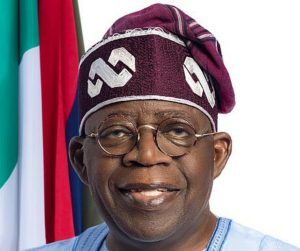Why Naira is Depreciating: The depreciation of the Naira is the most evident aspect of Nigeria’s economic problems. The naira, the currency of Nigeria, has been losing value against the dollar for some time now. On Thursday, August 10, 2023, the naira depreciated to an all-time low of 950 naira to the dollar, setting a new record.
Given that much of what Nigerians consume is imported or heavily reliant on imports, this trend would likely result in greater price increases for products and services as well as rising inflation rates. These include wheat, raw materials, and petroleum products.
Nigerians are now wondering why the Naira is falling or why the dollar’s exchange rate is swiftly rising. Certain key reasons for the exchange rate’s significant rise, particularly since June 14 stand out. This article examines the issues surrounding the naira’s persistent depreciating state.
Recommended: Countries with least affordable housing
4 (Four) Reasons Why Naira is Depreciating Today
1. Declining forex Supply: The first reason, and the root cause of the naira’s depreciation, is that the supply of dollars into the economy has been declining while demand for dollars has remained relatively unchanged, owing to the country’s massive demand for dollars, which is fueled by the country’s reliance on imported goods for many economic activities. The persistent decline in the country’s external reserves, which represents the quantity of dollars and foreign currency available to the nation for importation and international transactions, reflects this.

According to data provided by the CBN, the country’s foreign exchange reserves decreased by $3.23 billion, or 8.5 per cent, to $33.92 billion on July 9 from $37.15 billion on December 31st 2022. Export revenue, remittances from the overseas diaspora, international investment, foreign aid, external loans, etc. are all sources of foreign exchange inflow, or supply, into the external reserves.
External reserves increase when inflows exceed outflows. However, when outflows surpass inflows, external reserves dip.
2. Net Forex Inflow: Net Forex intake, or NFI, is a crucial indicator of the economy’s forex intake and outflow. NFI grows when inflow exceeds outflow. When outflows exceed inflows, NFI declines. According to CBN data, Nigeria’s net forex inflow has decreased since 2019. Nigeria’s NFI totalled $76.38 billion in 2019, according to the CBN. However, It declined by 6.6% to $70.65 billion in 2020, then by 25.4 per cent to $52.72 billion in 2021 and again by 28.3% to $37.94 billion in 2022. Thus, within four years, the country’s net forex inflow plunged by half (49.5%).

The drop in foreign investment inflow into the economy is a significant contributing element to this persistent decline in NFI. According to the NBS, capital importation (foreign investment) into Nigeria declined from $23.99 billion in 2019 to $5.33 billion in 2022. This reveals a huge 77.8% decrease in the amount of foreign currency entering the nation. This represents a worrying 77.8% reduction in a significant source of dollars entering the country.
The fact that external reserves declined by $3.23 billion, or 8.5%, this year suggests that the aforesaid pattern in net forex inflows and foreign investment inflows has not changed. The substantial reduction in the amount of dollars moved (turnover) in the official foreign exchange market, which is represented by the Investors and Exporters, I&E window, attests to this. The I&E window’s turnover dropped to $13.11 billion in the first half of this year (H1’23).
This represents a reduction of 35% from the turnover of $20.23 billion seen in the first half of 2022, or H1’22. The stark dollar shortage in the economy is explained by the aforementioned trend. And like other commodities, the price will increase when demand exceeds supply, all other factors being equal. As a result, the exchange rate (the cost of converting Naira for dollars) has continuously been on the rise.
Recommended: How to Sue a Bank in Nigeria: Your Rights and Options
3. New Forex Market Measure: The third factor for the recent significant depreciation of the naira is the new operational measures for the foreign exchange market that the CBN unveiled on June 14. These measures include removing numerous exchange rates from the official market and implementing the willing buyer-willing seller approach to determine the exchange rate in the I&E window.

Prior to the above actions, the CBN maintained distinct exchange rates for its various intervention or forex sales in the official forex market. The CBN-determined level for the official exchange rate was also maintained. However, following the CBN’s inability to supply all legitimate demand for foreign exchange due to the loss of external reserves, numerous organisations were forced to turn to the parallel market for their foreign exchange requirements.
Thus, while the official market exchange rate remained largely steady, the parallel market exchange rate grew significantly. Consequently, on June 13, the official exchange rate was N471.67 per dollar, and the parallel market exchange rate was N768 per dollar, resulting in a discrepancy of N296.33 per dollar.
Recommended: Countries With The Highest Rate Of Cybercrime
4. President Tinubu’s Grand Announcement: Multiple exchange rates on the official market and a significant difference in exchange rates between it and the parallel market suggested that there were forex subsidies as well as room for round-tripping and other fraud. This oddity impeded foreign investment entry into the country and received harsh criticism from investment analysts, the World Bank, the IMF, and international rating agencies. Additionally, it prohibited remittances from the diaspora into the nation as well as export revenue repatriation through banks.

Therefore, President Bola Tinubu promised to address this anomaly in his inaugural speech, stating that the CBN will seek to achieve a single exchange rate. The CBN’s June 19 announcement of actions was in keeping with the President’s statement. In order to allow demand and supply to decide the exchange rate using the “willing buyer willing seller model,” the CBN dissolved numerous exchange rates from the I&E window on June 14.
Additionally, I&E window transactions must be trade-backed, whereas government forex transactions were valued using the weighted average exchange rate of I&E window transactions. Additionally, the CBN halted selling foreign exchange to banks for later resale to final consumers, such as SME, PTA, BTA, etc. All forex requirements, and therefore all demand, must be met through the I&E window using the “willing buyer, willing seller” principle. While these changes sound exciting, the immediate aftermath has been a bit tumultuous, causing ripples in both the I&E window and parallel market rates.
Recommended: Countries with the worst education system in the world
Conclusion
Because a country’s international worth is determined by how well its currency performs on the foreign exchange market, a country’s value is influenced by its currency. This demonstrates how a nation’s currency serves as a symbol of its character. It is common knowledge that a country’s balance of payments is at risk if there is no policy framework in place to manage its limited resources in terms of foreign currency, also known as For the longest time, since the nation’s founding, the value of the Nigerian Naira has been on a depreciating path.
And apparently, the current situation of things is disappointing. At this point, implementation of adaptive economic policies is advocated to salvage the depreciating state of the naira.

Edeh Samuel Chukwuemeka, ACMC, is a lawyer and a certified mediator/conciliator in Nigeria. He is also a developer with knowledge in various programming languages. Samuel is determined to leverage his skills in technology, SEO, and legal practice to revolutionize the legal profession worldwide by creating web and mobile applications that simplify legal research. Sam is also passionate about educating and providing valuable information to people.